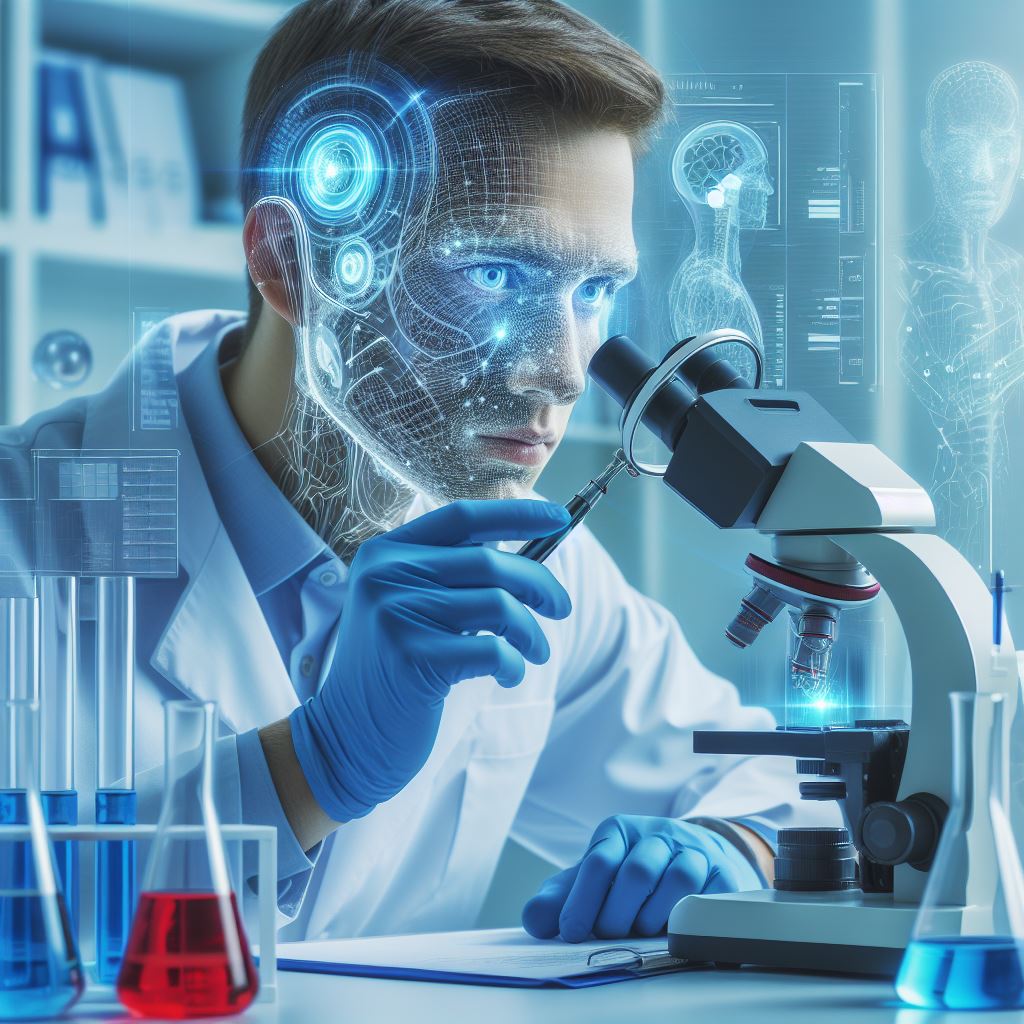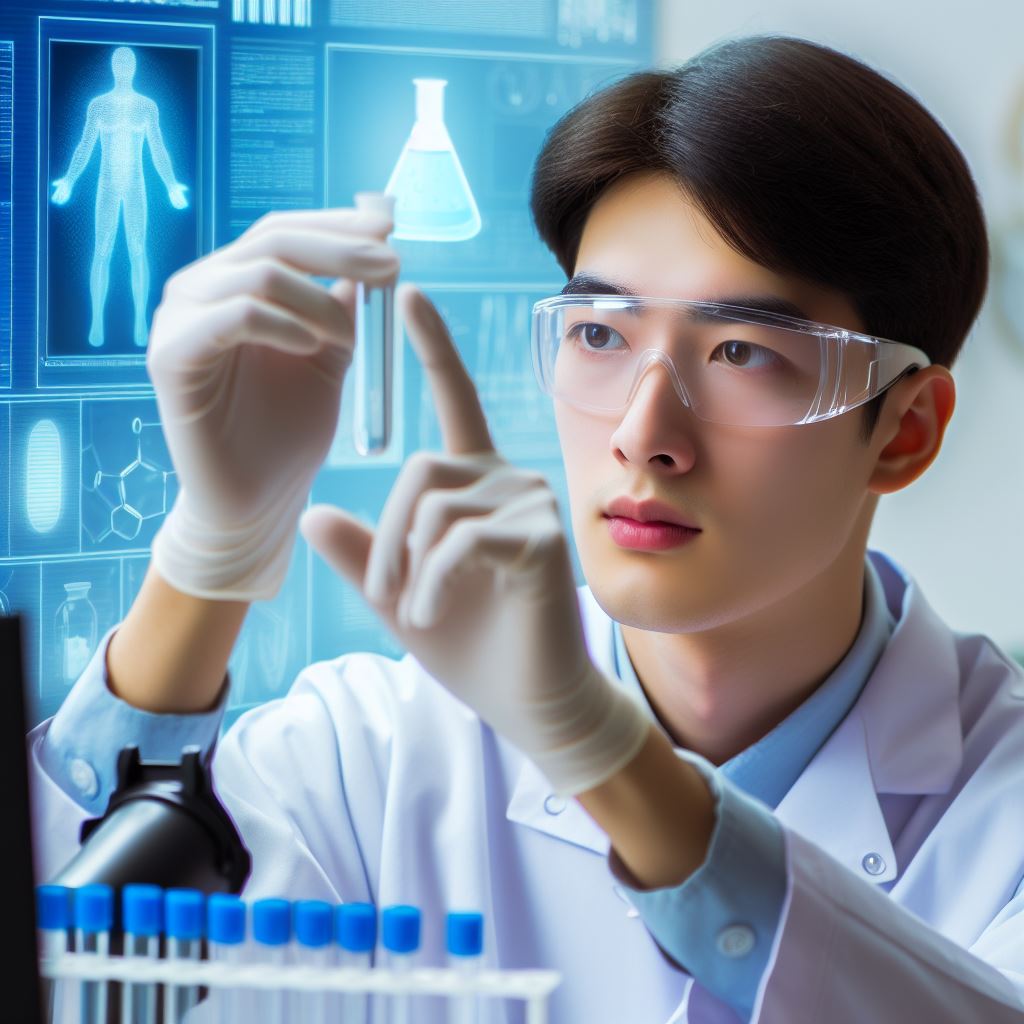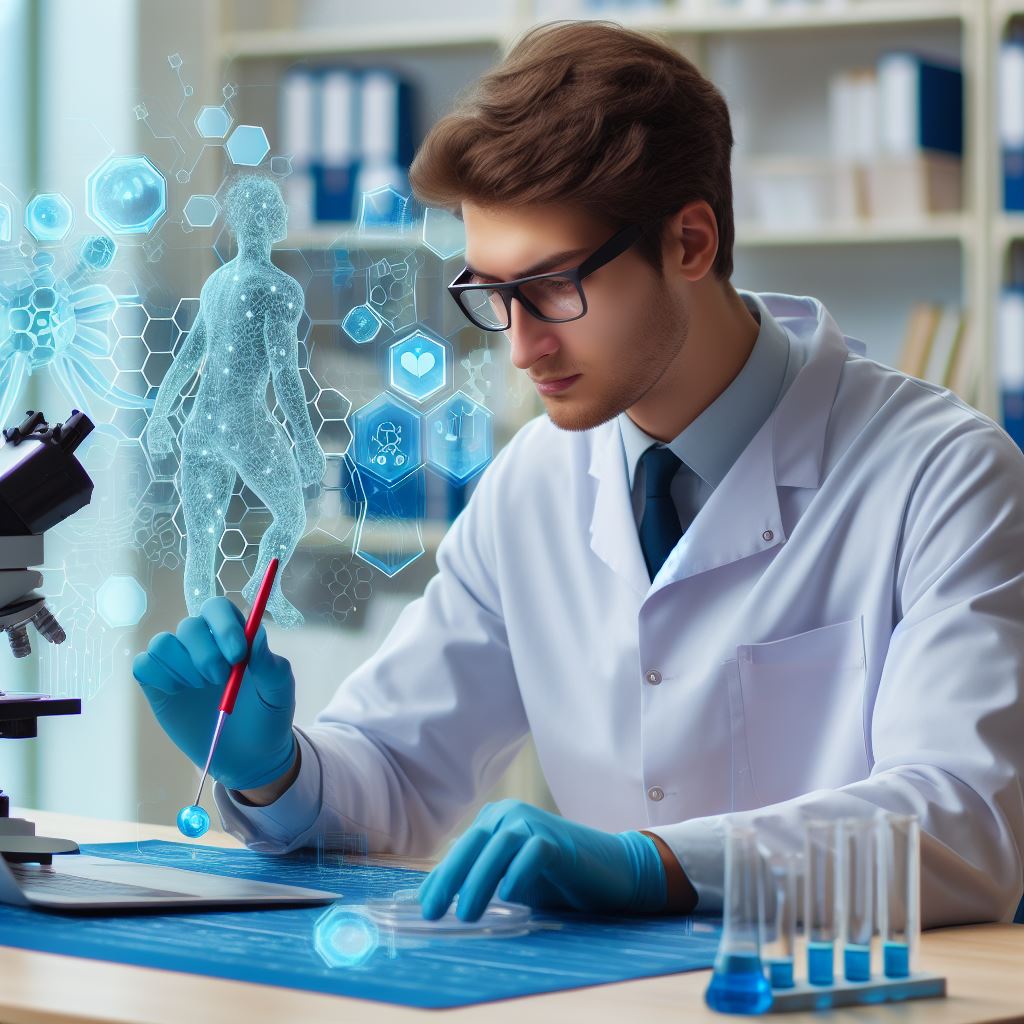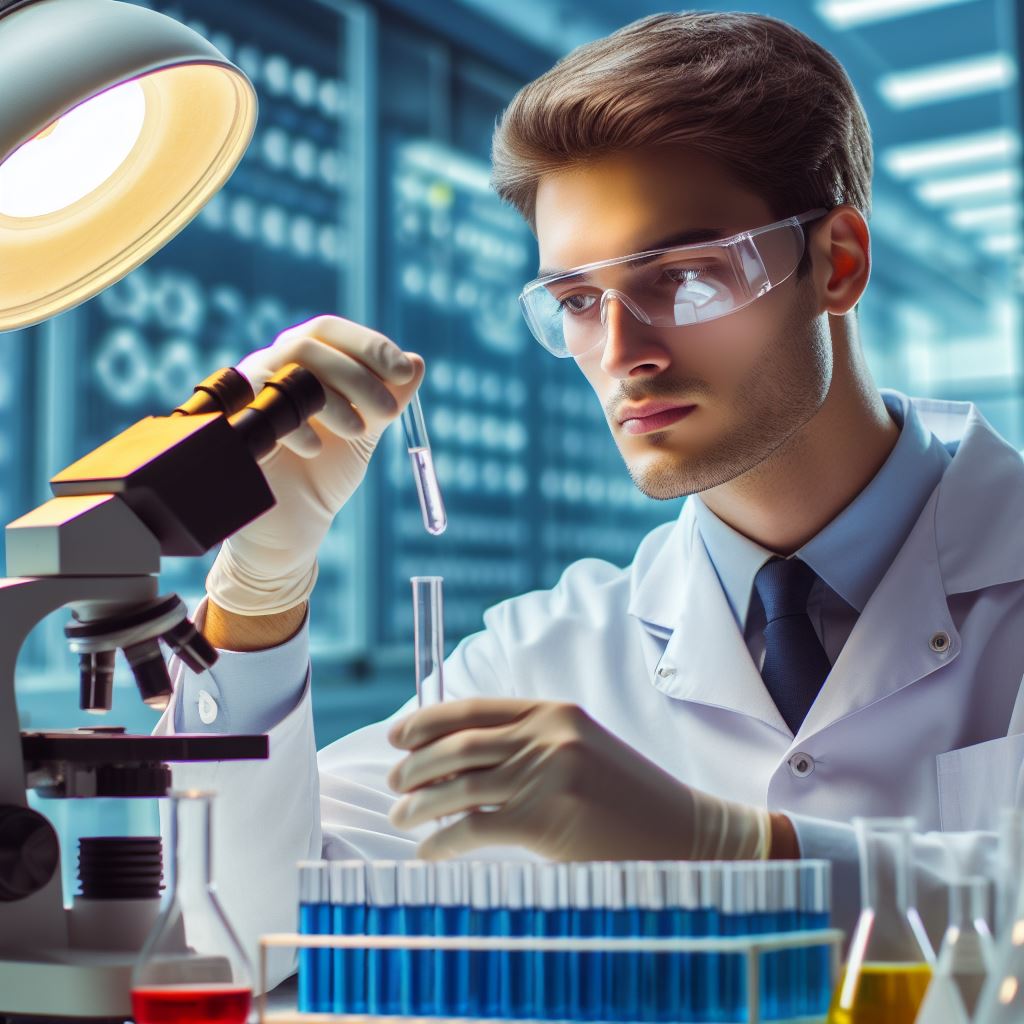Introduction
Lab equipment plays a crucial role in research as it enables scientists to conduct experiments accurately and efficiently.
In this blog post, we will discuss the basics of lab equipment in New Zealand research.
From understanding the significance of each tool to exploring common equipment used in various fields, we aim to provide a comprehensive overview.
Whether you are a student embarking on your scientific journey or a seasoned researcher looking for a refresher, this blog post will serve as a valuable resource to enhance your understanding of lab equipment in New Zealand research.
So, let’s dive in and explore the world of lab equipment!
Commonly Used Lab Equipment
In New Zealand research labs, there are several commonly used lab equipment that play a vital role in scientific experiments and analysis.
These tools ensure accurate measurements, observations, and experimental conditions.
Understanding the purpose and function of each equipment is essential for successful research outcomes.
Microscopes
Microscopes are crucial in scientific research as they enable scientists to observe and study objects that are too small to be seen with the naked eye.
They provide magnification and resolution, allowing for detailed examination of microorganisms, cells, and tissues.
Microscopes come in various types, such as compound microscopes and electron microscopes, each with its specific applications in research.
Centrifuges
Centrifuges are used for separating substances with different densities or sedimentation rates.
By spinning samples at high speeds, the centrifugal force separates components based on their mass or size.
This equipment is commonly used in molecular biology, biochemistry, and clinical research to isolate cells, proteins, and other particles from biological samples.
Pipettes
Pipettes are essential for precise measurement and transfer of liquids in small volumes.
Personalized Career Consulting
Unlock your potential with expert career advice tailored to your goals. Get personalized guidance and actionable steps toward your dream career in New Zealand.
Get StartedThey come in different designs, including mechanical and electronic, and are available in single-channel and multi-channel formats.
Pipettes are used extensively in various research fields, such as molecular biology, chemistry, and pharmaceutical experiments, to deliver accurate amounts of reagents or samples.
Incubators
Incubators provide controlled and optimal conditions for growing and maintaining living organisms or cell cultures.
They regulate temperature, humidity, and gas concentration to create an environment similar to that found in living systems.
Incubators are widely used in microbiology, cell biology, and tissue engineering research, as well as in clinical settings for culturing bacteria or human cells.
Spectrophotometers
Spectrophotometers measure the intensity of light absorbed or transmitted by a substance across a specific wavelength range.
They provide quantitative data on chemical compounds, including their concentration or purity.
Spectrophotometers are extensively used in biochemistry, molecular biology, and environmental research to analyze DNA, proteins, and various compounds in samples.
By employing these commonly used lab equipment, researchers can conduct accurate experiments, make observations, and analyze samples effectively.
Each of these tools plays a critical role in specific research areas, facilitating scientific discoveries and advancements.
Understanding their purpose and function allows scientists to choose the appropriate equipment for their experiments and ensure reliable and reproducible results.
Safety Guidelines for Using Lab Equipment
In any research laboratory, safety is of utmost importance to ensure the well-being of researchers and the accuracy of results.
By following safety protocols and guidelines, potential hazards can be minimized, and a safe working environment can be maintained.
Here are some safety guidelines for using lab equipment in New Zealand research:
Transform Your Career with a Professional CV and Cover Letter
Stand out to employers with an ATS-optimized resume and tailored cover letter designed to match your dream role. Let us craft your job application materials for success!
Get Started1. Importance of following safety protocols in the lab
- Enhances the overall safety of the laboratory
- Reduces the risk of accidents, injuries, and contamination
- Promotes a culture of safety and responsible scientific conduct
2. Overview of general lab safety measures
- Wearing appropriate protective gear such as goggles, gloves, and lab coats
- Following proper hygiene practices, including hand washing and sterilization
- Maintaining a clean and organized workspace
- Being aware of emergency exits and evacuation procedures
3. Wearing appropriate protective gear
- Goggles protect the eyes from chemical splashes or flying debris
- Gloves provide a barrier against hazardous substances and prevent skin contact
- Lab coats shield clothing from spills and potential chemical hazards
4. Proper handling and disposal of chemicals
- Observe proper storage and labeling of chemicals to prevent confusion
- Handle chemicals with caution, using appropriate gloves and tools
- Dispose of chemical waste in designated containers following local regulations
- Never pour chemicals down the sink unless instructed by proper disposal methods
5. Ensuring equipment is properly maintained and calibrated
- Regularly inspect equipment for any damages, wear, or malfunctioning parts
- Calibrate measuring instruments to ensure accurate readings and data
- Keep equipment clean and free of debris or contaminants
6. Specific safety guidelines for each type of lab equipment mentioned earlier
- Microscopes: Avoid touching the lenses and use lens paper for cleaning
- Spectrophotometers: Follow the manufacturer’s instructions for proper usage
- Centrifuges: Balance tubes properly and do not open while spinning
- Incubators: Set and monitor the correct temperature and humidity levels
- Pipettes: Use caution to avoid liquid splashes and accidental pipetting
- Autoclaves: Ensure proper loading, sealing, and release of pressure
By adhering to these safety guidelines, researchers can create a secure and conducive environment for scientific exploration and experimentation.
Remember, safety should always be a top priority when working with lab equipment.

Lab Equipment Maintenance and Calibration
Regular maintenance and calibration of lab equipment are crucial for ensuring accurate and reliable research results.
Without proper maintenance and calibration, equipment can become faulty or inaccurate, leading to compromised experiments and wasted resources.
Need for Regular Maintenance and Calibration
Maintenance of lab equipment involves routine cleaning, sterilizing, and periodic inspections.
Proper maintenance ensures that equipment functions optimally, minimizing the risk of malfunctions or inaccuracies.
Calibration, on the other hand, involves comparing equipment measurements to a known standard to determine its accuracy.
Regular calibration guarantees that the measurements obtained are precise and reliable, increasing the validity of experimental data.
Overview of Best Practices for Equipment Maintenance
Cleaning and Sterilizing Procedures
Cleanliness is a critical aspect of lab equipment maintenance.
Regularly clean equipment before and after use to prevent contamination and cross-contamination.
Use proper cleaning agents and sterilization techniques specified for each equipment type.
Periodic Inspections and Repairs
Routine inspections should be conducted to identify any signs of wear or damage.
Prompt repairs or replacements should be made to ensure equipment functions optimally and maintains accuracy.
Documentation and Record Keeping
Maintain detailed records of all maintenance activities, inspections, repairs, and calibrations performed.
Boost Your Career with a Standout LinkedIn Profile
Attract recruiters and expand your network with a fully optimized LinkedIn profile tailored to highlight your strengths and professional goals. Let your profile open doors to new opportunities!
Get OptimizedProper documentation helps track the history of each equipment, identify trends, and plan for future maintenance or calibrations.
Importance of Calibration and How It Affects the Accuracy of Experiments
Calibration is crucial for accurate scientific measurements.
It ensures that the values obtained from lab equipment are traceable and reliable.
Inaccurate measurements can lead to incorrect conclusions and wasted resources.
Calibration Techniques and Frequency
There are various calibration techniques used in labs, including zero calibration, span calibration, and multi-point calibration.
The frequency of calibration depends on the equipment type, its usage, and manufacturer’s recommendations.
Highly sensitive equipment might require more frequent calibrations compared to less critical equipment.
It is essential to follow industry standards and guidelines when determining calibration intervals.
Outsourcing Calibration Services
For some equipment, it may be necessary to outsource calibration services to specialized laboratories or calibration facilities.
These facilities have the expertise and equipment required to calibrate complex instruments accurately.
When outsourcing calibration, ensure that the facility is accredited and follows international standards for calibration processes.
Maintain proper documentation of outsourced calibration activities for future reference.
Lab equipment maintenance and calibration play a significant role in the accuracy and reliability of research outcomes.
By following best practices for maintenance, cleaning, and periodic inspections, lab equipment can be kept in optimal working condition.
Regular calibration ensures precise measurements and traceability to known standards, increasing the credibility of research results.
By implementing these practices, researchers can obtain reliable data and contribute to the advancement of scientific knowledge.
Where to Source Lab Equipment in NZ
Different avenues for obtaining lab equipment
When it comes to sourcing lab equipment in New Zealand, there are several avenues you can explore.
Let’s take a look at some of the different options available:
Government Research Institutions
One way to obtain lab equipment is through government research institutions.
These institutions often have well-equipped labs and can provide access to a wide range of equipment.
They may also have surplus equipment available for purchase or loan.
Universities and Educational Institutions
Another option is to approach universities and educational institutions.
These places often have state-of-the-art laboratories and may be willing to lend or sell equipment to individuals or smaller research groups.
They might even have equipment-sharing programs in place.
Private Suppliers and Manufacturers
If you prefer to purchase lab equipment new, private suppliers and manufacturers can be a good option.
There are several companies in New Zealand that specialize in supplying lab equipment.
They offer a wide range of products and can provide expert advice on selecting the right equipment for your needs.
Factors to consider when selecting equipment suppliers
Now that we’ve explored some avenues for obtaining lab equipment, let’s discuss the factors you should consider when selecting equipment suppliers:
Cost
Cost is often a significant consideration when purchasing lab equipment.
It’s essential to compare prices from different suppliers to ensure you’re getting the best value for your money.
However, be cautious of extremely low prices, as they could indicate subpar quality.
Quality
The quality of the equipment is crucial for accurate and reliable results.
It’s essential to choose suppliers that provide high-quality equipment that meets industry standards.
You can look for certifications or ask for references from other researchers who have used their products.
Support and Warranty
When investing in lab equipment, it’s essential to have access to reliable support and warranty services.
Check if the supplier offers technical assistance, repairs, and replacements for faulty equipment.
A supplier that provides good customer support can save you time and money in the long run.
In a nutshell, sourcing lab equipment in New Zealand can be done through various avenues such as government research institutions, universities, and private suppliers.
When choosing a supplier, consider factors like cost, quality, and support to ensure you make the right choice. Remember that having the right equipment is vital for successful research and experiments.
Conclusion
Lab equipment plays a crucial role in conducting research in New Zealand.
It ensures accurate results, promotes efficiency, and maintains safety standards.
Lab equipment is essential for obtaining reliable data, conducting experiments, and ensuring the validity of research findings in the New Zealand scientific community.
In this blog post, we discussed the significance of lab equipment in NZ research, highlighting its role in obtaining accurate data, promoting efficiency, and maintaining safety standards.
We also emphasized the importance of using proper lab equipment and following safety protocols.
We strongly encourage researchers to prioritize the utilization of appropriate lab equipment and maintain safety standards.
By doing so, they can enhance the quality of their research, ensure reliable results, and safeguard their well-being and the well-being of others.




